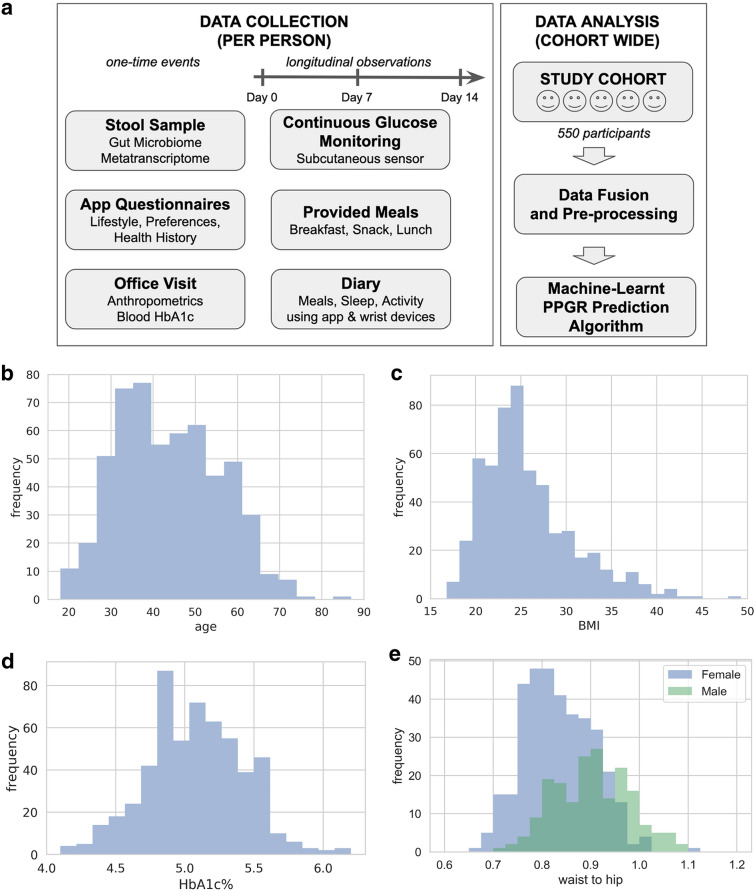Fig. 1.
Study design and population characteristics. a The study cohort had 550 adult participants (66% female). Each study participant provided a stool sample, filled out questionnaires, and made an office visit. Then over 14 days, participants consumed pre-designed meals that were provided, they monitored their blood glucose response, and they kept a diary of their meals, sleep, and activity. At the end of the study, all the data streams were fused, pre-processed, and analyzed as described in this paper. The following exclusion criteria were used: age < 18; dietary restrictions that would prevent adherence to any of the study diets; antibiotic use 1 month prior to or during study; skin disease (e.g., contact dermatitis) that precludes proper attachment of the CGM; pregnancy; active neoplastic disease; active neuropsychiatric disorder; myocardial infarction or cerebrovascular accident in the 6 months prior; pre-diagnosed type I or type II diabetes mellitus; HbA1c ≥ 6.5; or unwilling/incapable of following instructions. b Age distribution with mean of 43.8 years (SD 12.115). c 28% of the study population had BMI > 25 and 18% had BMI > 30. d 4% of the study population were pre-diabetic with HbA1c% > 5.7. e Waist-to-hip ratio distribution with mean of 0.901 (SD 0.076) for men and 0.832 (SD 0.071) for women

